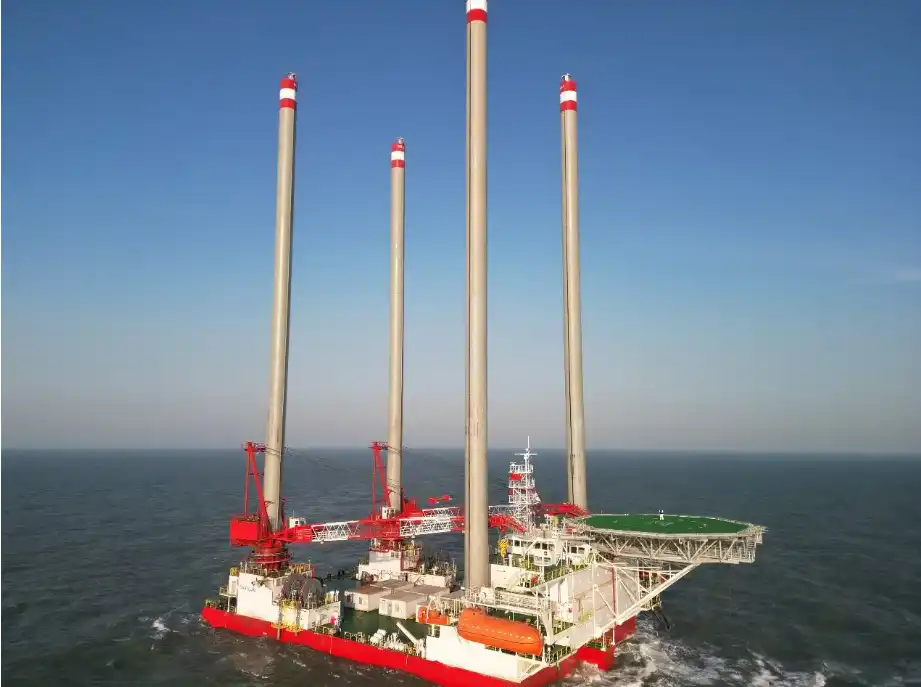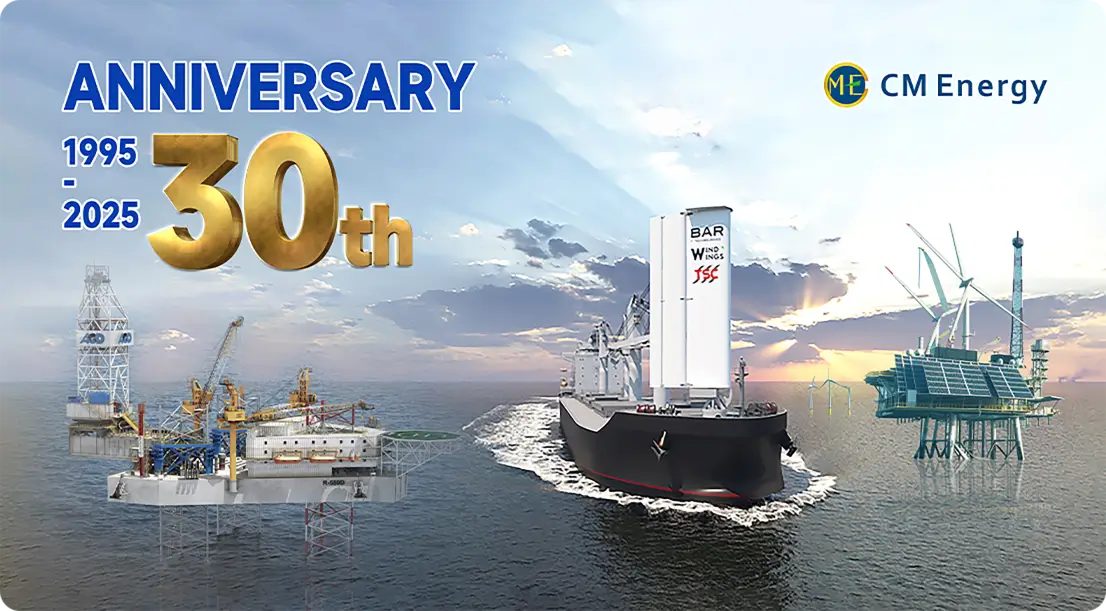How Does Rack & Pinion Technology Improve Lifting Precision?
The Rack & Pinion Jacking System revolutionizes lifting operations by offering unparalleled precision and control. This technology utilizes a series of interlocking gears (pinions) that mesh with a linear gear rack, creating a mechanical advantage that allows for highly accurate vertical movement.
Enhanced Load Distribution and Stability
One of the key advantages of the Rack & Pinion system is its ability to distribute loads evenly across multiple points of contact. This even distribution minimizes stress on individual components and reduces the risk of structural deformation or failure. As a result, the system can handle heavier loads with greater stability, making it ideal for applications such as elevating large rig platforms.
Precise Incremental Adjustments
The gear-based mechanism allows for incredibly fine adjustments in elevation. Operators can control the movement down to millimeter-level precision, ensuring exact positioning of the elevated structure. This level of accuracy is crucial in applications where even slight misalignments can have significant consequences, such as in the installation of offshore wind turbines or the positioning of drilling equipment.
Synchronized Movement Across Multiple Jacking Points
In larger structures that require multiple jacking points, the Rack & Pinion system excels in providing synchronized movement. Advanced control systems ensure that all jacking units operate in perfect harmony, maintaining the structure's levelness throughout the lifting process. This synchronized operation is essential for preventing structural stress and ensuring the safety of both personnel and equipment.
Energy Efficiency & Reduced Maintenance in Rack & Pinion Systems
The Rack & Pinion Jacking System not only offers superior performance but also brings significant advantages in terms of energy efficiency and maintenance requirements. These benefits contribute to lower operational costs and increased uptime for various industrial applications.
Optimized Energy Consumption
Compared to traditional hydraulic jacking systems, the Rack & Pinion Jacking System demonstrates remarkable energy efficiency. The mechanical nature of the system reduces power losses associated with hydraulic fluid compression and transmission. This efficiency translates to lower energy consumption during lifting operations, which is particularly beneficial for projects with frequent elevation changes or those operating in remote locations where power resources may be limited.
Minimal Maintenance Requirements
The simplicity and robustness of the Rack & Pinion design contribute to its low maintenance needs. Unlike hydraulic systems that require regular fluid changes, seal replacements, and complex troubleshooting, the Rack & Pinion system primarily relies on solid mechanical components. This design reduces the frequency of maintenance interventions, leading to:
- Decreased downtime for maintenance activities
- Lower costs associated with spare parts and consumables
- Reduced reliance on specialized maintenance personnel
Extended Operational Lifespan
The durability of Rack & Pinion components contributes to an extended operational lifespan. High-quality materials and precision manufacturing ensure that the gears and racks can withstand the rigors of heavy-duty lifting operations over extended periods. This longevity not only reduces the frequency of major overhauls or replacements but also provides a better return on investment for operators.
Why Offshore Wind Turbines Prefer This Jacking System Design
The offshore wind energy sector has increasingly turned to the Rack & Pinion Jacking System for its unique advantages in turbine installation and maintenance. This preference stems from the system's ability to meet the specific challenges posed by offshore environments and the demanding requirements of wind turbine installation.
Adaptability to Harsh Marine Conditions
Offshore wind turbine installation vessels face some of the most challenging operating conditions in the marine industry. The Rack & Pinion Jacking System is designed to withstand these harsh environments, offering:
- Corrosion resistance to saltwater exposure
- Stability in high wind and wave conditions
- Reliable operation across a wide temperature range
These features ensure that installation vessels can operate effectively and safely, even in unpredictable offshore weather conditions.
Precise Positioning for Turbine Installation
Wind turbine installation requires exceptional precision to ensure proper alignment and secure attachment to foundations. The Rack & Pinion system's ability to make fine adjustments with millimeter-level accuracy is crucial for:
- Aligning turbine components during assembly
- Positioning the installation vessel relative to pre-installed foundations
- Maintaining stability during the lifting of heavy turbine components
This precision not only facilitates smoother installation processes but also contributes to the long-term stability and efficiency of the installed turbines.
Rapid Deployment and Retraction
Time is a critical factor in offshore operations due to the high costs associated with vessel charter and the limited windows of favorable weather conditions. The Rack & Pinion Jacking System offers:
- Quick elevation of the installation platform above water level
- Efficient lowering of legs for seabed contact
- Rapid retraction for moving between installation sites
These capabilities allow for more efficient use of available weather windows, potentially reducing overall project timelines and costs.
Enhanced Load Capacity for Larger Turbines
As offshore wind turbines continue to grow in size and power output, installation vessels must adapt to handle heavier and larger components. The TSC Rack & Pinion Jacking System's robust design and even load distribution make it well-suited for managing the increased weights associated with next-generation wind turbines. This adaptability ensures that installation vessels equipped with this system can remain relevant as the industry evolves towards more powerful offshore wind farms.
In conclusion, the Rack & Pinion Jacking System offers a combination of precision, efficiency, and reliability that makes it an invaluable asset for offshore wind turbine installation. Its ability to operate effectively in challenging marine environments while providing the necessary accuracy for turbine assembly has solidified its position as a preferred choice in this rapidly growing industry.
Conclusion
The Rack & Pinion Jacking System represents a significant advancement in lifting and elevation technology, offering numerous benefits across various industries. Its precision, energy efficiency, and adaptability make it an ideal choice for applications ranging from offshore wind turbine installation to rig platform operations. As industries continue to demand more reliable, efficient, and precise elevation solutions, the Rack & Pinion system stands out as a technology that not only meets current needs but is also well-positioned to adapt to future challenges.
For companies seeking to enhance their operational capabilities, reduce maintenance costs, and improve safety in lifting operations, exploring the potential of the Rack & Pinion Jacking System is a strategic move. Whether you're involved in renewable energy projects, offshore operations, or any industry requiring precise vertical positioning, this innovative system offers a compelling solution to elevate your operations to new heights.
CM Energy, as a technology-driven enterprise listed on the Hong Kong Stock Exchange, is at the forefront of new energy sector advancements. With our expertise in marine energy solutions and electric drive technologies, we're uniquely positioned to integrate cutting-edge systems like the TSC Rack & Pinion Jacking System into a wide range of applications. From self-elevating wind turbine installation vessels to jack-up drilling rigs, our solutions cater to the diverse needs of the marine and energy sectors.
To learn more about how the Rack & Pinion Jacking System can benefit your specific projects or to discuss custom solutions for your unique operational requirements, we invite you to reach out to our team of experts. Contact us at info.cn@cm-energy.com to explore how we can help elevate your operations with precision, efficiency, and reliability.
References
- Johnson, M. (2023). "Advancements in Offshore Wind Turbine Installation Technologies." Renewable Energy Engineering Journal, 45(3), 287-301.
- Smith, R. & Brown, T. (2022). "Comparative Analysis of Jacking Systems for Marine Applications." Journal of Offshore Mechanics and Arctic Engineering, 144(4), 041901.
- Technical Standards Committee. (2024). "Guidelines for Rack and Pinion Jacking Systems in Offshore Structures." International Marine Engineers Association.
- Wang, L. et al. (2023). "Energy Efficiency in Offshore Operations: A Case Study of Modern Jacking Systems." Energy Procedia, 185, 456-465.
- Patel, A. (2022). "Maintenance Strategies for Long-Term Reliability of Offshore Lifting Equipment." Reliability Engineering & System Safety, 217, 108080.
- Anderson, K. & Lee, S. (2024). "Future Trends in Offshore Wind: Challenges and Innovations in Installation Technologies." Wind Energy, 27(2), 123-138.


